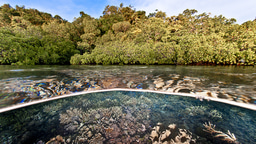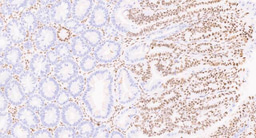A first approach to unravel the jellyfish diversity and ecology from Kribi coastal region (Cameroon, Gulf of Guinea)
Published in Earth & Environment, Ecology & Evolution, and Sustainability
Why is this research valuable?
Our sampling zone is recognized as a critically under-sampled region, though jellyfish blooms and their impacts are witnessed by fishermen and tourists. Given jellyfish blooms associated huge socio-economic, environmental and health issues, sufficient information regarding their taxonomy, population dynamics, food web roles, and composition, are relevant to design sustainable conservation measures. We undertook this research to raise awareness of the scientific community, policymakers and other sea users about jellyfish proliferations in the region, as well as their potential impact to foster sustainable conservation measures. The first step to that direction was to set up an inventory of available species and preliminary information on their ecology.
How did it all start?
This research started with a dream about one important courier I was receiving about an international opportunity during the night of the 11th to the 12th of February 2017. On Monday, 13th February 2017, I received a call from the Ministry of Environment, of nature protection and sustainable development in Cameroon inviting me to attend a Training workshop on “Pest Risks analysis”. After that training workshop organized at the Ministry Conference Hall the week that followed, participants were called to attend another training workshop the week after on “Commodity audit system”. I noticed that there was scanty information regarding invasive species of the marine environment. On the last slide of the last talk, it was written “Ballast water management”. I had heard about ballast water, but not knowing how destructive they could be for marine ecosystems if regulations were not well applied. At the time of the workshop, the regulation on Ballast water management was not yet adopted.
Once back at the research station, I started online research both on invasive species of the marine realm and ballast water management. As my computer could not yield good results due to its low performance, I used a new android telephone. The results obtained made me realize that jellyfish research was an unexplored boulevard in the region.
I made a survey among fishermen at Kribi beaches to assess the presence of jellyfish in our waters. People I met directed me to beach seine fishing where jellyfish samples in good condition could be found.
What was the research process like?
I remembered that I would go for sampling and once in the laboratory, I would not know exactly what to do, which features to check. It was difficult to rely only on scientific literature without additional guidance. As I could not find any jellyfish specialist within the national scientific community, I sent emails to every jellyfish specialist found on research papers, calling for help, calling for collaboration. Fortunately, there were two positive responses to my calls. The first one agreed to review a proposal I developed, but her time was to be compensated. The second jellyfish specialist was Prof. Andre Carrara Morandini. I really do not know how to talk about him, because what he did and is still doing is amazing. Prof. Andre Carrara Morandini would respond to all my emails, he would also send me jellyfish blooms symposium papers, sending me all the scientific literature I would not have access to, sometimes apologizing for delay, and I was like “you do not have to apologize”. That is when I decided to adopt that research topic as my PhD research work. This was the third time I was changing my PhD research topic due to several constraints including a shift in my research career direction, the publication of a paper closely aligned with my second topic, and a conflict of interest.
I shared with Prof. Andre the first results about our sole cubozoan species which I thought was a new species. Prof. Andre connected me to Dr. Ilka Straehler-Pohl, one of the well-known Cubozoa specialists in the world. She discussed with his friend Prof. Mark Gibbons from South Africa to invite me at the 6th International Jellyfish Blooms Symposium in Cape Town and attend the 2-days training on Scyphozoa and Cubozoa that was going to be organized after the symposium. My attendance at this Symposium and training workshop changed my perception and upgraded my skills as a future jellyfish specialist.
What about the funding of our research?
Until that time, I was sponsoring myself with my salary. As I was lacking even basic material and small equipment to work efficiently, I took a loan from my bank for 4years (2018-2022). That money was used to buy my materials, small equipment and reagents that could allow me to do taxonomy, including but not limited to 0.1g precision scale, slides, buckets, dissecting kits, gloves, sampling bowls, bowls for conservation, reagents (ethanol, formalin…), microtubes 2ml for molecular taxonomy, materials for writing (note books, pen, papers, pencil…), tissue paper rolls, etc. That money also sponsored some field work activities but not all. Fortunately, we were having a light microscope Zeiss with four magnifications (5X, 10X, 40X and 100X) at the laboratory.
So, what did we find?
We discovered an unexplored macro-jellyfish (medusozoans) community made up of Scyphozoa and Cubozoa. Four main taxa were identified including Cyanea sp. (7.6%), Chrysaora sp. (20.6%), Chimaerus palmatus (25.4%), and Catostylus tagi (46.5%) with five color morphotypes. Chrysaora sp. and Cyanea sp. were all new records from the West Africa coastal region, which would need full description. The sole cubozoan found within the sample, Chimaerus palmatus, was one of the two African cubozoan ever described by Haeckel (1880) and which was thought to be lost. Till then no other record of this species was reported, except Gibbons et al. (2022) as Chirodropus palmatus. So, we fully described this species (Straehler-Pohl et al., 2022) which was classified within our newly created genus Chimaerus.
This paper also gives preliminary glimpse of species ecology including species abondance and size variation, and their inter-relationship. Identified species could complete their entire life span within this environment except for Cyanea sp. which occupies a distinct niche. C. palmatus and Cyanea sp. abundances were highly correlated.
What are the implications of these findings, and what happens next?
Our research1-2 set the foundation for future research works which include the molecular characterization and phylogeny of our morphologically identified species, the study of species reproductive biology and role within the food web using eDNA and other available techniques, as well as their potential valorization in the region.
Since we finished this part, we are also looking for funding, training and collaboration to perform these research activities - so if you are reading this and you are interested – please do reach out!
Corresponding author of the paper: Gisele Flodore Ghepdeu Youbouni ggiseleflodore@yahoo.fr. https://doi.org/10.1007/s44289-025-00088-z
References
- Ghepdeu, G. F. Y., Chougong, D. T., Morandini, A. C., Meutchieye, F., Dicka, E. H. K., Mbacham, W. F., & Tchoumbougnang, F. (2025). A first approach to unravel the jellyfish diversity and ecology of the Kribi coastal region (Cameroon, Gulf of Guinea). Discover Oceans, 2(48). https://doi.org/10.1007/s44289-025-00088-z
- Straehler-Pohl, I., Ghepdeu, G. F. Y., Chougong, D. T., Tchoumbougnang, F., & Morandini, A. C. (2022). Ernst Haeckelʼs mysterious species, Part II: African Chirodropida (Cnidaria, Cubomedusae). Plankton Benthos Research, 17(4), 406–429. https://doi.org/10.3800/pbr.17.406
Follow the Topic
-
Discover Oceans

This is a fully open access, peer-reviewed journal that supports multidisciplinary research and policy developments across the fields of oceanography and marine science.
What are SDG Topics?
An introduction to Sustainable Development Goals (SDGs) Topics and their role in highlighting sustainable development research.
Continue reading announcementRelated Collections
With Collections, you can get published faster and increase your visibility.
Coastal and Estuarine Frontiers: Interactions of Pollution, Natural Processes, and Environmental Change
Understanding the physical, chemical, and biological processes in oceanic, coastal, and estuarine systems is essential for assessing the health and sustainability of marine environments. This Collection brings together research focused on in-situ observations, remote sensing techniques, and aquatic pollution studies that address key scientific questions related to ecosystem variability, water quality, and ocean-atmosphere interactions.
The scope includes investigations into estuarine and coastal dynamics, current systems, ocean colour applications, and contaminant pathways, as well as studies that examine ecosystem responses to natural and anthropogenic stressors. Emphasis is placed on integrative approaches that combine observational data and analytical techniques to better understand spatial and temporal changes in marine environments.
This Collection seeks to serve as a resource for researchers working across marine and estuarine disciplines, supporting efforts to monitor, protect, and sustainably manage aquatic systems.
Keywords: Coastal and Estuarine Systems; Marine Observations; Ocean Colour Remote Sensing; Aquatic Pollution; Biogeochemistry; Ocean Processes; Marine Ecosystems
Publishing Model: Open Access
Deadline: Jun 01, 2026
Computational Advances in Ocean Modelling: Integrating AI, Ensembles, and Downscaling Techniques
Ocean modelling is undergoing a paradigm shift, driven by exponential growth in computational power and data availability. This Collection aims to capture the forefront of this transformation by focusing on the latest computational advances that are enhancing the accuracy, resolution, and scope of ocean prediction systems, from surface ocean waves to large-scale circulation phenomena. We particularly welcome contributions on the novel application and integration of artificial intelligence (AI) and machine learning (ML), ensemble forecast and hindcast, and innovative downscaling techniques that bridge the gap between global models and regional impacts. This Collection will serve as a vital reference for researchers pushing the boundaries of what is possible in ocean simulation, forecasting, and climate.
Keywords: Ocean Modelling; Computational Oceanography; Artificial Intelligence; Machine Learning; Ensemble Forecasting; Downscaling; Ocean Wave Modelling; Climate Modelling; Data Assimilation
Publishing Model: Open Access
Deadline: Jun 01, 2026





Please sign in or register for FREE
If you are a registered user on Research Communities by Springer Nature, please sign in